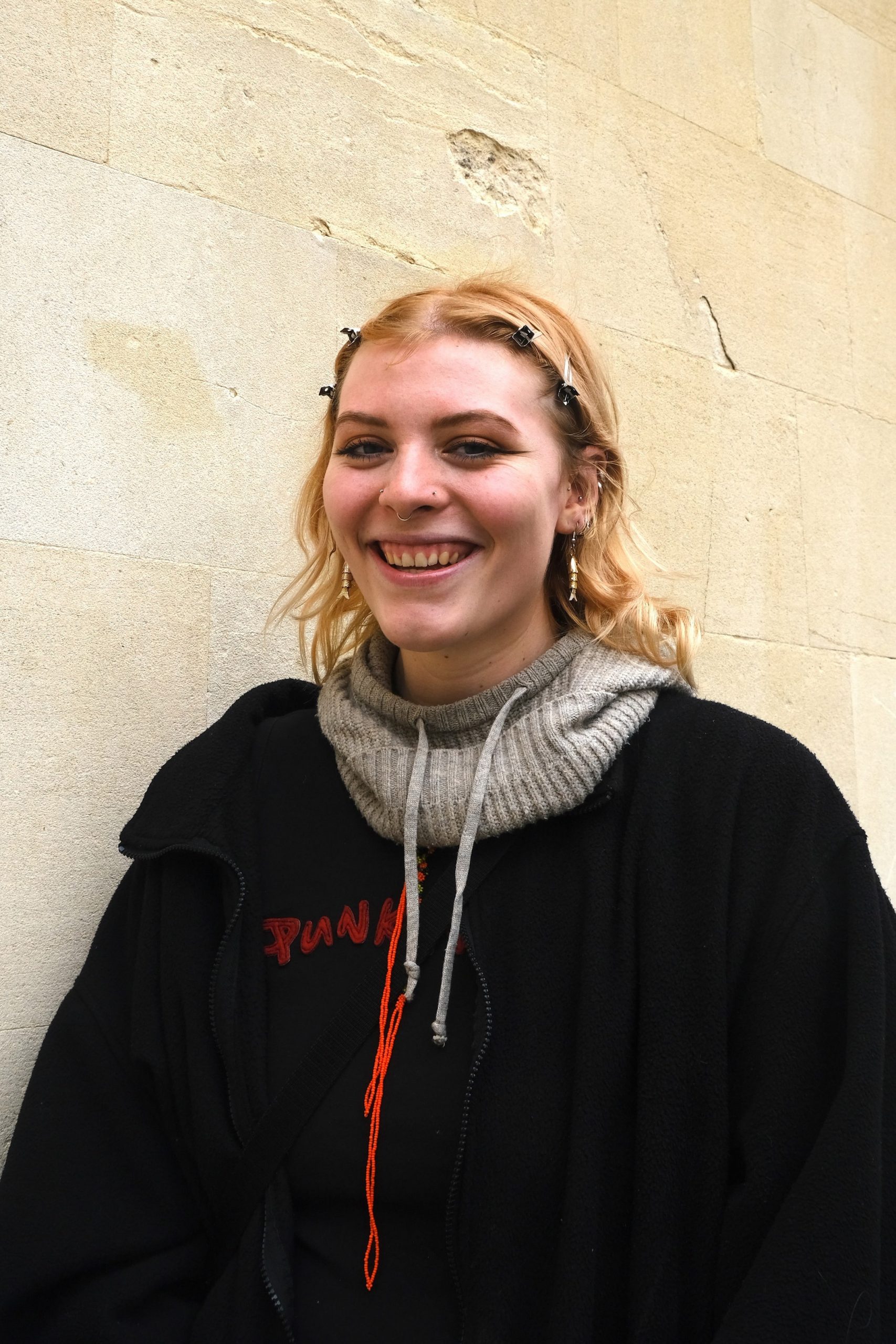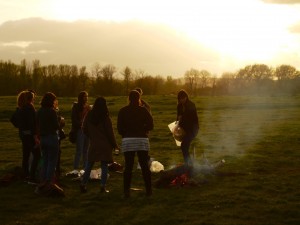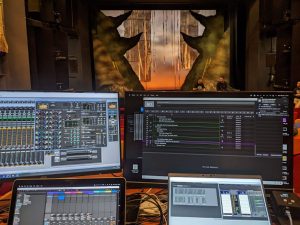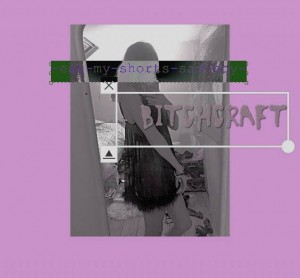
Artist of the Week: Izzy Kori
by Isaaq Tomkins | May 1, 2023
Izzy Kori is a second-year student at Exeter College, studying Fine Art at the Ruskin School. This week we paid her a visit to have a chat about her art, which seems to exist in every conceivable form: sculptures, paintings, set design, animation, often multiple at once…
So, Izzy, let’s have a look at some of this art. Why don’t you pick out a piece and tell me about it?

Sure. This is what I’m working on at the moment, it’s a two-piece sculpture made from MDF with acrylic paint, and it’s called Lucky Touch. It’s a swampy lady reaching out to another woman who’s clothed and whispering something. A lot of the stuff that I make I’ve just randomly drawn or feel like doing. Only afterwards do they gain a storyline and meaning. They’re very random or have been taken from a film or a comic or something else I like.
The stuff I’ve been doing lately is a lot more refined and pretty. So in this case you can see droplets on the women and a more finished painting – this has taken me a long time – whereas these things over here [she gestures around the room]: expanding foam and Mod Rock, eyelashes, ping-pong balls, things that I can easily get my hands on, took me less than a day because I just wanted to whack them together.
So, do you think the approach to your artwork has changed with this piece?
Definitely. I’m trying to perfect it – they’re not finished yet. They’re going to have these wheels [she gestures to a bag of wheels] attached to them so they can move around.
Do you like your art to be dynamic?
If I could extend my work more, I’d make it into more of a film or an animation. I really like the extra level of movement, especially with things like puppets – I love that kind of stuff.
Speaking of art in different mediums, what was your vision for the three plays you’ve worked on this year: Wishbone, The Tempest, and The Metamorphosis?
Wishbone was my first introduction to theatre at Oxford. I really enjoyed doing the set design and had lots of freedom. And then going into The Tempest was a massive step up because it was at The Oxford Playhouse, and you’re doing so much, all the time. It took over my life for that period of time. I think I approach theatre similarly to how I do my work here, so I use lots of materials and textures. For example, in The Tempest, the whole dynamic was that we wanted everything to be recycled or second-hand. So, everything we got was from charity shops or bulk orders from eBay. And for The Metamorphosis, I don’t want to give it away just yet.
I guess we’ll have to come and watch it then!
Yes. You have to come to watch it at the Pilch in Week Six. I’m really excited – it’s going to be very different from the other things I’ve been doing.
Enticing. Shall we look at another piece?
There are so many I could show you. Let’s take this one [she reaches for the framed section of the piece pictured below]

So, at the end of first year, you have a prelim show, which is a final exhibit of what you’ve done that year. Right now, this just looks like a portrait, but at the time it had bodies coming out of it [pictured above]. It was hung on the wall, and it had a horsetail, some grass and horses stuck on the wall around it. It’s very different seeing stuff in your studio space compared to in an exhibition.
Where would be the ideal space for you to display your art?
I enjoy doing set design because I really like putting my art somewhere which isn’t a white cube! At the moment, theatre is really working out for me in that respect.
This piece is called ‘Neigh’, but tell me about ‘Neigh II’.
‘Neigh II’ is the giant puppet lady that I’ve shown in a few different spaces now. She’s a giant woman who is playing with a little horse and the word ‘neigh’ is all over the walls.

What’s going on with the human-horse hybrid theme?
I think I just found it funny: the idea of the human saying ‘neigh’ rather than the horse. But also, Rose English, for example, did this performance piece (before a horse show) where three women were dressed up as horses and trotting about, which I found absolutely hilarious. I also find it interesting to think about the writing and the translation of words as opposed to vocalising the ‘neigh’. I find it all quite funny and like to see how I can translate it into my work. That’s the thread.
Do you think there’s anything that connects all your art?
My work is very figurative, and all my characters have this Roman-nosed face. Yes – maybe I’m just searching for the Roman nose. But I would say everything I do comes from random drawings and things that I’m interested in.
Would you like to talk to me about the practical side of being an artist? Finding your style and getting yourself recognised, displayed etc.
It is HARD. Especially as an art student at the Ruskin, I feel like from the first year you’re here, you’re just thrown into it: “You’re an artist now, just get on with it”. I feel like I’m still trying to figure out what I’m actually doing and the kind of work I want to create. But in terms of exhibitions, there are lots of opportunities in Oxford. You can just go on Instagram and find a lot of stuff, but going into the real world is a very different experience.
How do you feel about having to go out into the world when this is over?
Scared [she laughs]. Very scared. I don’t know if I want to be an artist that just shows their work in exhibitions. I want to look at other career paths. But in terms of that lifestyle, it seems a bit inaccessible or at least hard to try to get into straight away anyway, so it would take time.
Shall we look at a final piece?
Yeah, actually I can show you this:

Before my studio literally became a storage space, this giant ear was part of a huge wall installation that I was going to animate – “Was” being the key term.
What halted those plans?
It’s quite hard to do something on this big wall, and also constantly have something else going on. I always want to do something else or try something different. So, it’s never fulfilled its destiny.
So, you did a foundation year at Island Innovation VI Form Campus on the Island of Wight. How has your art changed since studying at the Ruskin School?
I think it’s changed a lot, but also a lot of my ideas came from that one year of doing just art and nothing else. Even though my foundation year was during Covid, we were all doing art projects. I think my art is similar to what I was doing before but now is a lot more defined: I have a style now.
Wonderful. I think we’ll leave things there. Thank you so much for your time, Izzy.
You’re so welcome.
Interview by Isaaq Tomkins.
Photography by Faye Song.




